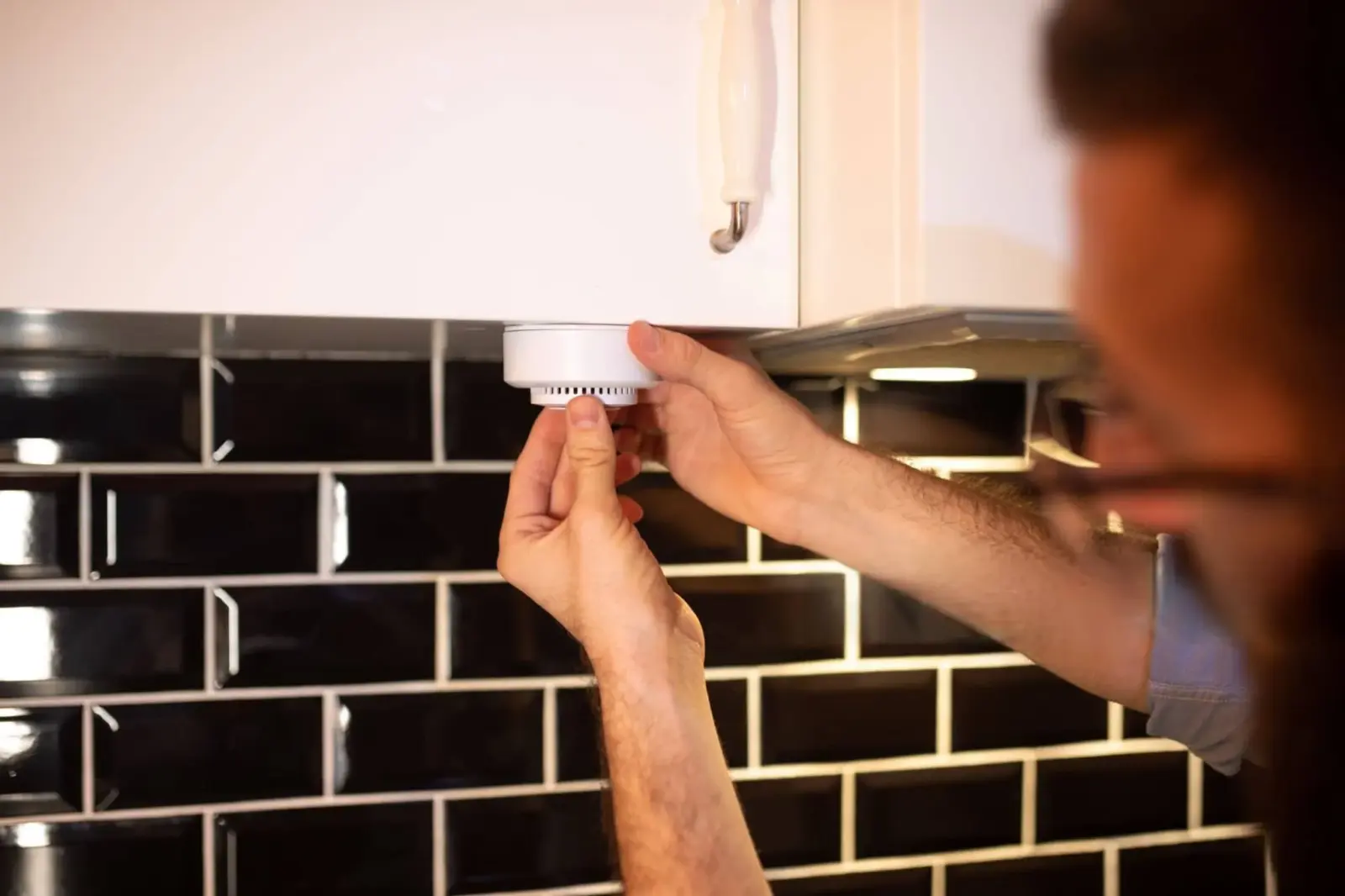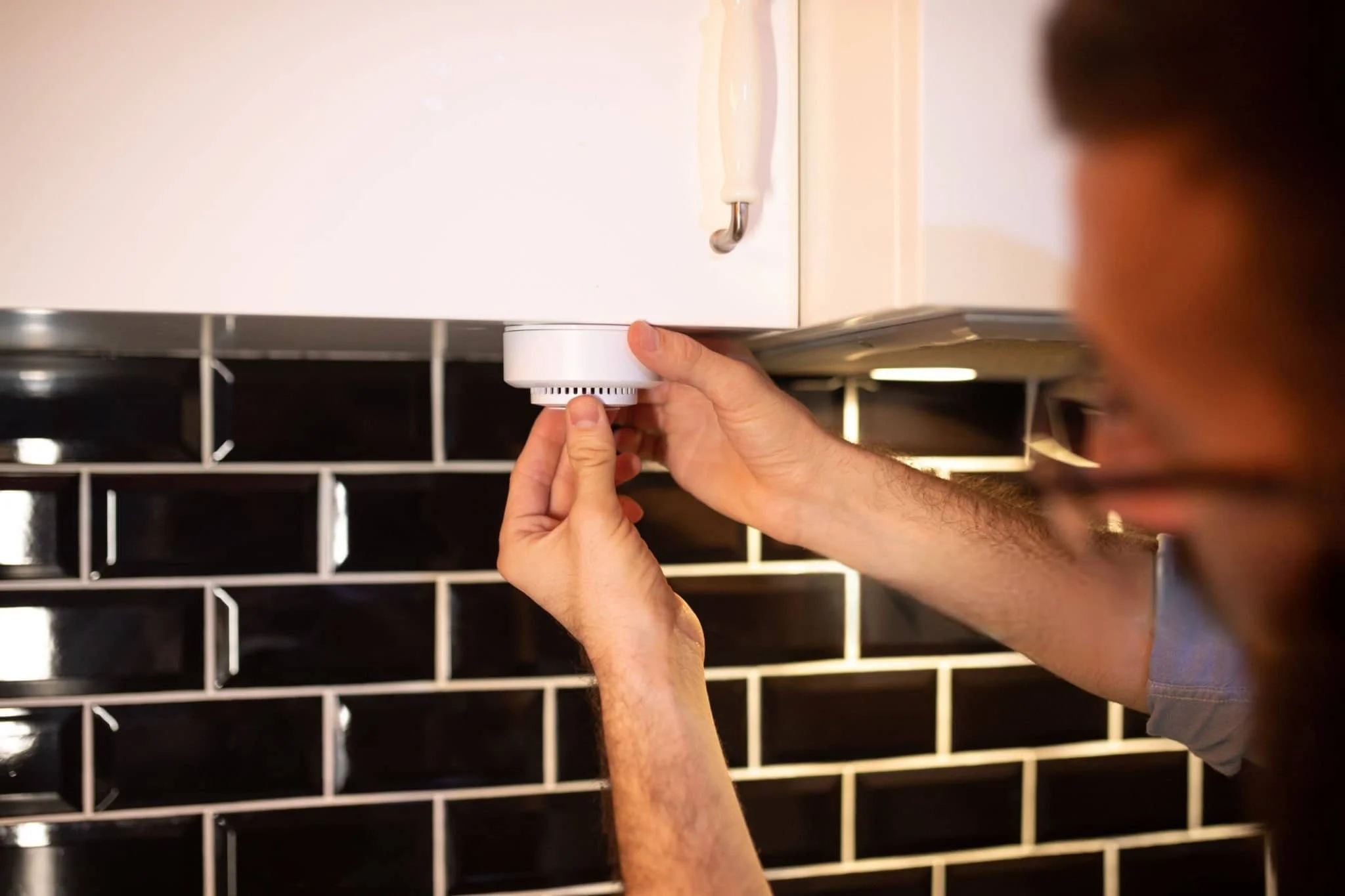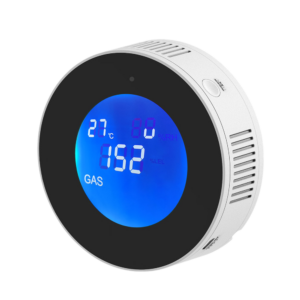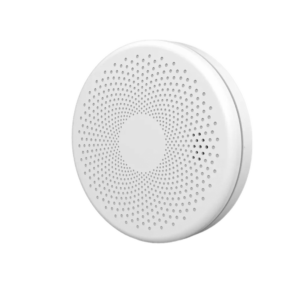Most homeowners feel safe once a carbon monoxide (CO) alarm is installed.
But here’s the truth: a CO alarm can’t detect natural gas or propane leaks — and that gap could make a big difference in home safety.
This guide breaks down what each type of alarm really does, why gas leaks are still dangerous even with a CO detector, and how to build a full-coverage protection system for your home.

What Carbon Monoxide Alarms Actually Detect
Carbon monoxide is an odorless, colorless, and tasteless gas produced by incomplete combustion — from furnaces, gas stoves, fireplaces, or car engines. Because it gives no warning smell, a CO alarm is essential for detecting it early.
CO alarms use electrochemical sensors that react only to carbon monoxide molecules. That means they’re blind to natural gas, propane, or butane — gases made mostly of methane or hydrocarbons.
If you’ve ever noticed a strange fuel or “gasoline-like” odor, that’s not CO — it’s likely methane mixed with an odorant (mercaptan) added by utility companies to help you smell leaks quickly.
Can a CO Alarm Detect Natural Gas or Propane?
In short: no.
A carbon monoxide alarm cannot detect natural gas, propane, or other combustible gases.
Here’s why:
| Alarm Type | Detects | Common Gases | Purpose |
|---|---|---|---|
| CO Alarm | Carbon monoxide | CO | Warns of poisoning from combustion byproducts |
| Gas Leak Detector | Methane, propane, butane | CH₄, C₃H₈ | Warns of fuel leaks before ignition |
| Smoke Alarm | Smoke particles | — | Warns of fire or overheating |
CO detectors and gas detectors use different sensing technologies.
CO alarms rely on chemical reactions within their sensor plates; gas leak alarms rely on semiconductor sensors (MQ-series) that respond to combustible gases in the air.
So, if your home uses natural gas, propane heaters, or gas water heaters, you need both — a CO alarm and a dedicated gas leak alarm.
Why Gas Leaks Are Still Dangerous — Even If You Have a CO Alarm
Gas leaks don’t just waste energy. They can cause fires, explosions, or even asphyxiation if the gas displaces oxygen in enclosed spaces.
Common leak spots include:
- Kitchens (gas stoves, ovens)
- Basements or garages (furnaces, water heaters)
- Laundry areas (gas dryers)
- Utility rooms (pipes and valves)
The challenge?
These spaces often don’t have CO alarms installed — leaving a dangerous blind spot.
That’s where smart WiFi gas detectors come in.
They continuously monitor the air for methane or propane, and if levels rise, they send instant app alerts even when you’re away.
Don’t leave a blind spot: CO alarms don’t sense fuel gases. A WiFi gas detector can alert you early—even when you’re away.
What’s the Difference Between CO, Smoke, and Gas Leak Alarms?
It’s easy to confuse them, since they’re often installed side by side. But each has a distinct purpose.
| Type of Alarm | Detects | Typical Location | Example Device |
|---|---|---|---|
| Smoke Alarm | Fire & smoke particles | Hallways, bedrooms | Smoke and Carbon Monoxide Detector – GasNet-CM |
| CO Alarm | Carbon monoxide | Near sleeping areas | GasNet-CM Dual Sensor |
| Gas Leak Alarm | Methane, propane | Kitchen, furnace, or basement | WiFi Natural Gas Detector – GasNet-S4 |
Each type covers a different hazard.
And when integrated into a smart home system, they can all connect to your phone or smart speaker — giving you real-time updates no matter where you are.
Best Way to Protect Your Home — Use Both Types Together
The safest homes use layered protection.
- Smoke & CO Detector (like GasNet-CM) guards against fire and carbon monoxide buildup.
- WiFi Gas Leak Detector (like GasNet-S4) detects methane or propane leaks before ignition.
- Together, they provide 24/7 smart monitoring — and can even shut off gas supply automatically when paired with a smart valve system.
Where to Place Gas Leak Alarms in Your Home
Proper placement makes all the difference:
- Natural gas (methane) rises — install detectors near the ceiling and close to gas sources.
- Propane sinks — install detectors near the floor in areas using LP gas.
- Avoid corners or spots with poor air circulation.
- Check batteries monthly, and replace devices every 5–7 years as sensors age.
For more detailed placement rules, refer to the NFPA 720 Standard for Carbon Monoxide and Combustible Gas Detection.
FAQ: Quick Answers About Gas Leak and CO Alarms
Can a carbon monoxide alarm detect gas leak?
No. Carbon monoxide alarms only detect CO produced by incomplete combustion.
They do not sense natural gas, propane, or other fuel gases.
For those, you need a dedicated gas leak alarm designed to detect methane or propane before danger builds up.
Do fire alarms detect gas leaks?
No. Fire alarms are made to detect smoke particles and heat, not combustible gas.
If your home uses gas stoves, heaters, or furnaces, it’s best to install a gas leak detector near those appliances for early warning.
What’s the best gas leak alarm for home use?
Look for a WiFi-enabled natural gas detector that can sense both methane and propane and send real-time phone alerts.
A model like the GasNet-S4 WiFi Natural Gas Detector offers instant notifications and reliable coverage for kitchens, basements, and utility rooms.
Do I need both CO and gas detectors?
Yes. Carbon monoxide and fuel gas are completely different hazards.
A CO alarm protects against carbon monoxide poisoning, while a gas leak alarm prevents fire or explosion risks from methane or propane leaks.
Using both gives you full home protection.
Where should I install gas leak alarms?
For natural gas (methane), mount the alarm high on the wall or near the ceiling, since methane rises.
For propane (LP gas), place it low on the wall or near the floor, because propane sinks.
Focus on kitchens, utility rooms, and furnace areas where leaks are most likely to occur.
Check and test detectors monthly for best performance.
Stay Protected — Don’t Rely on One Alarm Type
Even if your CO alarm is working perfectly, it can’t sense a gas leak before it becomes dangerous.
Installing a dedicated WiFi gas detector alongside your CO and smoke alarms provides full-spectrum protection — and peace of mind.
💡 Pro tip: Always check your local utility’s natural gas safety guidelines for proper ventilation and leak response procedures.
Protect your home from both gas and carbon monoxide leaks with our dual smart detector set. Enjoy up to 10% off for a limited time — peace of mind has never been this affordable.
Shop the Black Friday Bundle →

